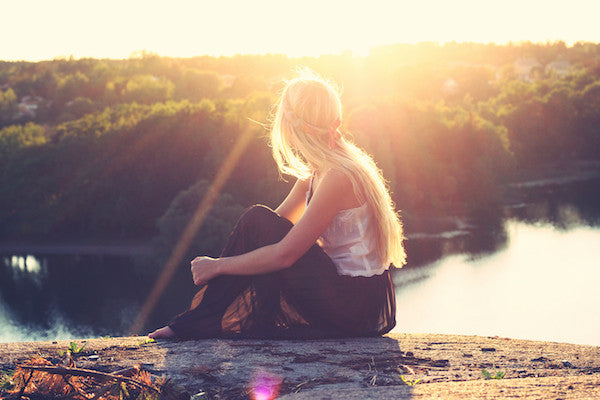
Last year we published the 6 Skincare Ingredients Wreaking Havoc on Earth and this year we are up to 7. You probably reduce, reuse and recycle, but did you know that many of the ingredients you have learned to avoid in skincare due to human health reasons, can have a lasting impact on our Earth? Check out these Big Baddie Ingredients that are wreaking havoc:
1. Microbeads - Thank goodness people are listening and the government is too. A bill now prohibits the manufacture of products containing plastic microbeads. However, products with microbeads may still be available on retail in products such as toothpaste. Microbeads have been used in many personal-care and beauty products, such as facial scrubs, soaps and toothpastes. Often times they are spotted as colorful flecks that serve no purpose but to make a product look "prettier". They do not dissolve and can persist in the environment for decades. They wind up in waterways, where they are ingested by fish, putting their health at great risk.
2. BHA/BHT - Used as preservatives in cosmetics and moisturizers, BHA is listed as a chemical of potential concern that can be toxic to aquatic organisms and can accumulate in the environment. The United Nations Environment Program assessment noted that BHT has a moderate to high risk for bioaccumulation in aquatic species. (Source: David Suzuki Foundation)
3. Siloxanes: Cyclotetrasiloxane, Cylcopentasiloxane, Cyclohexasiloxane, Polydimethylsiloxane - These are silicone based compounds used in personal care products to soften, smooth and moisten and are often found in hair conditioners, moisturizers and facial treatments. Hard to believe that the same ingredients are found in building sealants and windshield water repellants. Siloxanes are toxic, persistent and have the potential to accumulate in aquatic organisms. Dimethicone is a related ingredient, but its impact on the environment in controversial. (source: David Suzuki Foundation)
4. Triclosan - Used as an antibacterial ingredient in soaps, toothpastes and cosmetics, and is associated with negative health and environmental impacts. Triclosan has no added consumer health value and thus should be avoided in household products. It is toxic to algae, phyto-plankton and can accumulate in fish. This is concerning as most products that contain the ingredient get washed down the drain, contaminating waterways. (Source - Beyond Pesticides)
5. Oxybenzone - A chemical commonly used in sun blocks to prevent sunburn is now killing coral reefs around the world. Researchers at the University of Central Florida have found that oxybenzone exists in high concentrations in the waters around popular coral reefs in Hawaii and the Caribbean. The chemical not only kills the coral, it causes DNA damage making it unlikely that the coral can develop properly. The highest concentrations of oxybenzone were found in reefs most popular with tourists, and sadly, 80% of coral reefs have been lost as a result. (Source - today.ucf.edu)
6. Synthetic Fragrance - We know that synthetic fragrance can be made up of hundreds of other ingredients that do not need to be disclosed. One of these, diethyl phthalate (DEP), is listed as a Priority and Toxic Pollutant under the U.S. Clean Water Act, based on evidence that it can be toxic to wildlife and the environment. Researchers at Stanford University have associated synthetic fragrance, including musk, to damaging aquatic wildlife - in particular, mussels. (source- stanford.edunews)
7. 1,4 Dioxane - Classified as one of the "most serious hazardous wastes" by the EPA, 1,4 Dioxane does not breakdown in the environment, and poses a threat to human health as it is now being found in tap water. Read the FULL STORY on 1,4 Dioxane.
For more information on the toxicity of these and other ingredients view our Big Baddies list and shop The Choosy Chick for safer, earth friendly products.

Sources:
Photo by Matthew Henry from Burst
https://www.congress.gov/bill/114th-congress/house-bill/1321
http://davidsuzuki.org/issues/health/science/toxics/chemicals-in-your-cosmetics---bha-and-bhti/
http://davidsuzuki.org/issues/health/science/toxics/chemicals-in-your-cosmetics---siloxanes/
http://www.beyondpesticides.org/assets/media/documents/antibacterial/triclosan-lurking-3-09.pdf
http://today.ucf.edu/lathering-up-with-sunscreen-may-protect-against-cancer-killing-coral-reefs-worldwide/
http://news.stanford.edu/news/2004/november3/Perfume-1103.html



Comments
LOVED THIS SHARE so inspiring that you mentioned the great David Suzuki. I learned so much from him, even as a young child that what I put on my skin also effects the environment around me. Truly everyone should have this list in their wallets! Raising a glass to you ChoosyChick’s and all you’ve done to clean up the skincare industry!